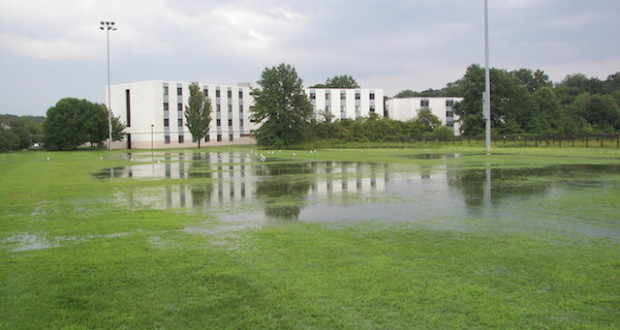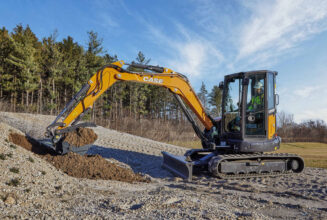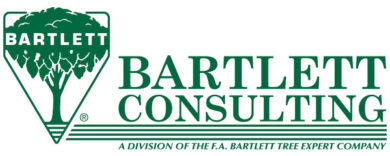Managing Water for Playability
By Brad Park

This article will attempt to add to the existing base of knowledge on drainage by discussing my own observations in dealing with sports field drainage as well as baseball/softball skin surface water management issues in a University Extension setting.
Sports field design and construction
It has been my experience that many sports field architects and engineers have unrealistic expectations concerning the way native soils or sand-modified soils drain internally. Architects and engineers will often develop a specification for a sports field calling for construction using a sandy loam soil (or finer in texture), perhaps native to the site, and design the field with minimal surface pitch (i.e. slope) with the expectation that it will exhibit rapid internal drainage. Following field construction, often performed by a contractor who employs heavy road building equipment to manipulate soils during construction, the field drains poorly, negatively impacting the playability of the surface.
A sports field can be constructed with minimal surface pitch (e.g. 0.5%) if the rootzone conforms to specifications for golf course putting green construction developed by the United States Golf Association (USGA). While subtle deviations (i.e. greater fine and very fine sand, silt, and clay) from the USGA specifications may still allow for acceptable internal drainage and limited surface pitch, McIntyre and Jakobsen do a very nice job describing how the internal movement of water though soil profiles (including “golf” sands with too many fines and sandy loams) becomes increasingly restricted under greater compaction levels—compaction being a more-often-than-not sports field construction reality.
The most pragmatic strategy in working with non-USGA conforming rootzones and certainly native soils is to design sports fields using these soils with adequate surface pitch. For example, in the design of a soccer/lacrosse/North American football field using a native soil (e.g. sandy loam, silt loam, etc.), the plans should include a “crown” that has no less than 1.5% surface slope from the middle of the field (goal to goal; or endzone to endzone) toward the sidelines.
The multipurpose field dilemma
A reoccurring sports field design problem entails the creation of multipurpose fields constructed using native soils or soils poorly modified with sand that are tipped diagonally from one corner of the field to the other. These designs are desirable from the perspective of athletic directors, coaches, business administrators and other decision makers as an appearance is created that field space is maximized. Who could not resist fitting a baseball field, softball field, and soccer/lacrosse/field hockey field in one two-and-half acre footprint? I have often observed the placement of a baseball or softball skin surface in the lowest corner of the field where water is forced to surface drain (i.e. run down hill) onto the infield skin.
On the issue of multipurpose fields, Puhalla et al. (see sidebar) note that sports fields should be treated as individual drainage units, and should not be expected to perform acceptably with water running onto a sports field from an adjacent field; moreover, within each field, an infield skin surface should not be lower than the outfield.
Improving drainage on existing fields
There are several strategies that can be employed to improve the drainage of existing fields, as field reconstruction is typically not feasible. The following strategies are meant to improve, or “augment,” the surface drainage characteristics of a field with some existing surface pitch, either in the form of a crown or tipped from one side to another.
Sand-slit drains can be designed and installed as sand-filled trenches (e.g. 3 to 4-inch; 12-inch deep) with a strip drain embedded in the base of the trench; the goal of this system is to intercept surface-draining water and rapidly move it off the sports field into a collector drain(s) (Puhalla et al.). These authors provide excellent schematics of these systems and note that the drains should be installed at a 45-degree angle to the direction of the surface runoff. Dr. Andy McNitt of Penn State (see sidebar) advises that after installation of a sand-slit drain system core cultivation of the field should be followed by core harvesting and sand topdressing; this management style, similar to that of a “push-up” golf course putting green, will preserve the integrity of the sand-filled trenches.
Sand-slit drain installation is a dramatically underutilized technology in the school/town sector of sports field management. Having made dozens of sports field consultations during the past 13 years, I can only recall a handful of occasions where this sand-slit drainage has been employed. This drainage technique can be installed on both existing sports fields as well as part of the construction of new fields. Unfortunately, in the eyes of many decision-makers a sand-slit drainage system is viewed as an unaffordable “luxury” that is only reserved for the premier field of the school, town, college, etc. During the past 10-15 years, the primary “improvement” made to many school and town premier sports fields has been the removal of natural turfgrass and installation of synthetic turf—considerable costs both at the time of installation and at eventual tear-out and resurfacing.
Newer machines (e.g. BLEC Sandmaster, WaterWick, etc.) have appeared on the market in recent years that mimic sand-slit drainage installation where sand channels can be more rapidly introduced into a sports field in lieu of traditional trenching practices, creation of spoils, etc. While these tools will effectively create sand-filled trenches and improve drainage, they do not provide the advantage of an installed pipe at the base of the trench that will accelerate water movement. Similar to slit drains, operation of these machines should be made at a 45-degree angle relative to the surface flow of water.
Baseball/softball infields and infield skin surfaces
Several useful resources have been developed in recent years that provide practical information on the subject of baseball and softball infield skin surfaces. The Rutgers Cooperative Extension Fact Sheet, “Skin Surface Selection and Management for Baseball and Softball Infields” summarizes infield mix selection criteria developed by American Society for Testing and Materials (ASTM) and management information derived from field research and experienced sports field managers. This document can be accessed by performing a simple search using any web browser. Baseball and Softball Fields: Design, Construction, Renovation, and Maintenance is a textbook dedicated to this subject matter (Puhalla et al., 2003) and is a must-have resource for engineers and architects who are in the business of designing sports fields.
Infield design
There are two primary considerations when designing baseball and softball infields: 1) The infield should be designed/constructed in such a manner to move surface water away from the infield toward the outfield and foul territory; and 2) Infield mixes/skin surfaces should not be expected to exhibit acceptable internal drainage and should therefore be part of the larger infield design to direct water toward the outfield and foul territory via surface pitch.
Regarding the first design consideration, as previously noted in the discussion concerning multipurpose fields, surface water should never be directed onto a baseball/softball infield. Moisture management plays a key role in the maintenance of infield skin surfaces; the sports turf manager needs to have the ability to apply water to the skin at his or her discretion to maximize the playability of the surface, not be preoccupied with unwanted surface water running onto an infield skin surface as a result of design flaws. Puhalla et al. show an excellent set of drawings to illustrate grading designs with added “good,” “better,” and “preferred (best)” commentary in order of effectiveness in moving surface water both away from the infield and off the entire playing surface in the most rapid manner possible.
All good designs call for some minor pitch (e.g. 0.5%) to infield skin surfaces to provide surface drainage. While extremely sandy infield mixes may allow for some internal drainage, most contain enough fines that under compacted conditions internal drainage will be compromised resulting in surface pitch being a necessity.
Infield skin surface management
“Skin Surface Selection and Management for Baseball and Softball Infields” (Park and Murphy, 2009) summarizes the importance of water management in maintaining infield skin surfaces. In the most basic terms, water is needed to soften fine-textured infield mixes (high silt and clay content) and firm coarse-textured mixes (high sand content).
In my experience, outside of natural rainfall events, water is not regularly applied to most school and town infield skin surfaces in New Jersey for the purpose of managing surface hardness and playability. The majority of mixes I have encountered at schools and towns consist of approximately 80% sand and 20% silt+clay. While appropriately applying water could certainly improve the playability of these surfaces, many perform adequately considering the level of play in lieu of supplying water. On a cautionary note, high sand content infield mixes can be over-scarified with motorized infield grooming equipment equipped with large “teeth.” Without the ability to apply water to firm these mixes, the loose, cat litter-like conditions that result from overly aggressive grooming are difficult to firm until natural rainfall supplies the necessary moisture.
Similarly, grooming practices should be performed in such a manner to maintain a grade that allows for surface drainage. Water will pool in low-spots, sometimes referred to as “birdbaths,” if grooming procedures regularly remove infield mix from one area of the skin surface and deposit on another location of the skin surface (i.e. creating a high spot). Periodic laser-guided grading of infield skin surfaces is a highly effective means of re-setting grades (and good surface drainage).
Conditioners (e.g. calcined clay) can be spread on top of skin surfaces to improve playability over a range of weather conditions. Conditioners are often used to soak-up excess water after rain; finer-textured conditioners work best for this purpose but should be removed from the skin surface after play. Skin surface water retention is a function of the amount of silt and clay in the infield mix, not the amount of calcined clay on the surface; calcined clay applied to the skin surface will often dry before the underlying infield mix resulting in some grounds managers applying unneeded irrigation water.
A trained, competent sports field manager can employ the finesse that is required to manage water for playability. Sports fields design parameters and construction methods are not always conducive to good drainage, and the costs and/or field down time necessary to improve these problems dictate that a sports field manager must often “work with what he or she’s got.” Case in point: Poor sports field drainage can be compounded with bad irrigation management; that is, a timer/clock programmed irrigation system may be allowed to deliver additional water following a natural rainfall event rendering a sports field unplayable. A sports field manager with site-specific experience will have the feel/finesse to properly irrigate a poorly drained sports field to maintain plant vigor yet provide good playability on a surface that is highly susceptible to being compromised with over-watering.
Brad Park is sports turf research & education coordinator at Rutgers University; a member of the Sports Field Managers Association of New Jersey Board of Directors since 2003; and editor, SFMANJ Update newsletter. For a complete list of resources discussed or cited in this article, see www.sportsturfonline.com. This article first appeared in the autumn 2015 edition of Sports Turf Manager, the official publication of Sports Turf Canada.



